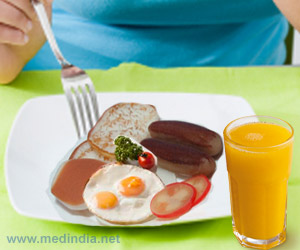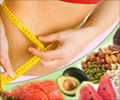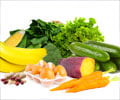Want to lose weight, but just can’t say no to your favorite junk food and high sugar snacks? Here is the solution and it can be done in a few months.

Scientists studied the brain reward system (that attempts to regulate and control behavior by inducing pleasurable effects) in thirteen obese people. Eight of them were participants in a new 6-month weight loss program and the other five were not enrolled in the program.
Both groups underwent magnetic resonance imaging (MRI) brain scans at the starting and end of the program. After the six-month program, the brain scans of the participants showed changes in areas of the brain reward center. They had increased sensitivity to healthy, lower-calorie foods, indicating an increased reward and enjoyment of healthier food cues. They also showed decreased sensitivity to the unhealthy foods.
The weight loss program called iDiet was designed by Susan B. Roberts, PhD, Professor of Psychiatry at Tufts University and author of more than 200 research studies on nutrition and weight management.
It was a science-based weight loss program that significantly lowers health care costs and productivity loss linked with high risk and obese employees, by reducing Type 2 diabetes, sleep apnea, cardiovascular disease, hypertension, and the need for gastric surgery.
Scientists explained that the goal of the program was to help people achieve a sustainable weight loss of 0.5–1.0 kg per week and reduce energy intake by 500–1000 kilocalorie per day.
The menu plans had a specific dietary composition profile to reduce hunger. Scientists combined low-glycemic index carbohydrates with higher fiber and higher protein — that is, foods with a slower digestion profile and reduced fluctuations in blood glucose. In particular, they provided approximately 25% energy from protein and fat, and 50% from low-glycemic index carbohydrates and contained 40grams per day dietary fiber.
“It is possible to shift preferences from junk food to low calorie food without surgery, and that MRI is a key technique for exploring the brain's role in food cues,” they stated.
Choosing healthy foods:
Rice
Choose rice that is high in fiber. Brown rice doesn’t have as much fiber, but it has more than white rice. Carefully verify the added salt content in packaged/flavored rice. There’s likely to be a lot (up to 1,000 mg) in certain brands.
Pasta
Choose pasta that are also high in fiber and preferably pasta that is 100% whole grain (that delivers the same rich balance of nutrients that are found in the original grain seed). You need 7 grams of fiber per serving (and 25 to 35 grams daily), but before you dig into a bowl of penne, check the serving size. The serving size listed on a food label is a standardized amount to help you compare the nutrition content of various foods.
Pasta expands as you cook it. So, an ounce of uncooked pasta has more calories than an ounce of cooked pasta. If the label doesn’t specify, the serving size is for cooked pasta.
Microwave meals
Microwave meal is a prepackaged frozen or chilled meal that comes as an individual portion. Even low-cal options can contain more than 30% of your daily sodium. You need to compare brand to brand, as most frozen dinners will have more salt than they should. Look for the ones with the smallest percentage of daily value.
Also, fat and calorie content is a major issue with these meals. They can contain unsaturated fats from olive oil and salmon but not saturated fat from cream or butter. Also aim for less than 500 calories. And since this is a meal, ensure that you have 10 grams of protein or more per serving.
Snack bars
Pay attention to the protein content, along with the calories, fat, sugar, and fiber, in these kinds of foods. The best buys have at least 3 grams of fiber and 5 grams of protein and less than 10 grams of sugar.
It can contain 300 calories if it’s a meal and 8 to 10 grams of protein is all right, but 20 grams is probably too much. Control yourself to about 10 grams of total fat, and no more than 1 gram of saturated fat, but also verify where the fat is coming from. Nuts are the major source of fat in a snack bar.
Sports drinks
Sport drinks are soft drinks containing electrolytes such as sodium, potassium, and chloride, and a high percentage of sugar. It is designed to restore energy during or after sporting activity or tiring exercise. Though sports drinks are great while you work out, choose water if you’re simply thirsty on a hot day.
Smart Ways to Lose Weight
1. Eat smaller portions.
2. Use smaller plates.
3. Use spoons to eat, instead of fingers.
4. Choose healthier ingredients.
5. Eat all the food you enjoy.
Source-Medindia














